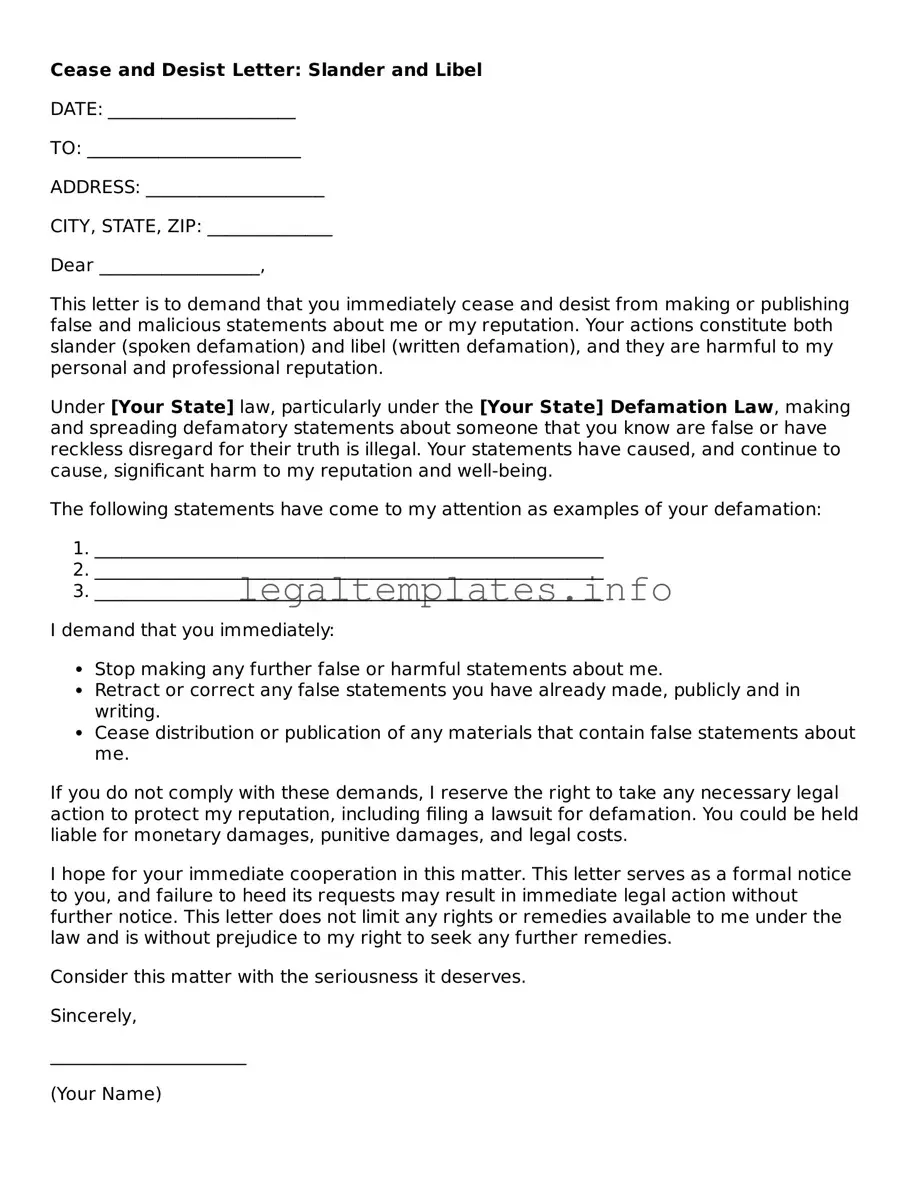Cease and Desist Letter: Slander and Libel
DATE: _____________________
TO: ________________________
ADDRESS: ____________________
CITY, STATE, ZIP: ______________
Dear __________________,
This letter is to demand that you immediately cease and desist from making or publishing false and malicious statements about me or my reputation. Your actions constitute both slander (spoken defamation) and libel (written defamation), and they are harmful to my personal and professional reputation.
Under [Your State] law, particularly under the [Your State] Defamation Law, making and spreading defamatory statements about someone that you know are false or have reckless disregard for their truth is illegal. Your statements have caused, and continue to cause, significant harm to my reputation and well-being.
The following statements have come to my attention as examples of your defamation:
- _________________________________________________________
- _________________________________________________________
- _________________________________________________________
I demand that you immediately:
- Stop making any further false or harmful statements about me.
- Retract or correct any false statements you have already made, publicly and in writing.
- Cease distribution or publication of any materials that contain false statements about me.
If you do not comply with these demands, I reserve the right to take any necessary legal action to protect my reputation, including filing a lawsuit for defamation. You could be held liable for monetary damages, punitive damages, and legal costs.
I hope for your immediate cooperation in this matter. This letter serves as a formal notice to you, and failure to heed its requests may result in immediate legal action without further notice. This letter does not limit any rights or remedies available to me under the law and is without prejudice to my right to seek any further remedies.
Consider this matter with the seriousness it deserves.
Sincerely,
______________________
(Your Name)
(Your Address)
(City, State, Zip)
(Your Email)
(Your Phone Number)
